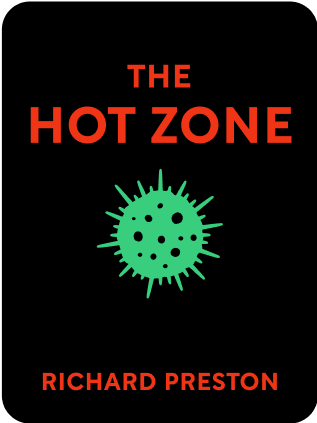

This article is an excerpt from the Shortform summary of "The Hot Zone" by Richard Preston. Shortform has the world's best summaries of books you should be reading.
Like this article? Sign up for a free trial here .
What is Zaire Ebolavirus? How is Zaire Ebolavirus different from other Ebola viruses?
Zaire Ebolavirus is one strain of Ebola virus in the filovirus family. Ebola Zaire is extremely deadly and contagious.
Read more about Zaire Ebolavirus below.
1976: First Zaire Ebolavirus Outbreak
Just two months after the Ebola Sudan outbreak ignited, Ebola Zaire appeared 500 miles away, in the mostly rural Bumba Zone of northern Zaire. Ebola Zaire was even deadlier, with almost double the kill rate of Ebola Sudan.
The virus appeared at the rural Yambuku Mission Hospital, which was run by Belgian nuns. No one knows who the first human was to contract Ebola Zaire, or from what—whether animal meat, insect blood, a spider bite, or something else. The hospital’s practice of reusing dirty needles made it impossible to know which patient first brought the virus into the hospital, and began an Ebola Zaire outbreak.
Just a drop of infected blood is enough to transmit Ebola, so the virus quickly spread among the hospital’s nurses, injection patients, and their families, hitting 55 surrounding villages at once.
When one nun at the hospital, known as Sister M. E., became infected, a priest and another nun flew her to Kinshasa, the country’s capital. They reasoned that she would receive better treatment there, at Ngaliema Hospital. Sister M. E. survived the trip and then died at Ngaliema Hospital.
The doctors at Ngaliema Hospital recognized the nun’s symptoms as similar to Marburg, so they sent samples of her liver and blood to national laboratories in Belgium and England, hoping to identify the disease in the Ebola Zaire outbreak.
1983: U.S. Army Ebola Experiments
In 1983, a U.S. Army civilian scientist and Ebola expert named Eugene Johnson led research on the Ebola and Marburg viruses. Johnson and his team infected monkeys with Zaire Ebolavirus, then gave them various drugs in hope of finding one that either treated or cured the virus.
Johnson conducted his experiments at the United States Army Medical Research Institute of Infectious Diseases (USAMRIID) at Fort Detrick, Maryland. The work at USAMRIID focused on fighting viruses and bacteria—whether weaponized or naturally occurring—by developing vaccines and studying how to contain outbreaks.
(Shortform note: Since the book’s publication in 1995, there have been Ebola outbreaks every few years, the majority of which have been Ebola Zaire. Most have been fairly small (less than 100 cases) and centered in Western Africa, but one was a far outlier: From 2013-2016, Ebola Zaire spread across 10 countries, infecting more than 28,000 people and killing more than 11,000.)

———End of Preview———
Like what you just read? Read the rest of the world's best summary of Richard Preston's "The Hot Zone" at Shortform .
Here's what you'll find in our full The Hot Zone summary :
- The many different strains of Ebola, including the deadliest kind with a kill rate of 90%
- How scientists unraveled the mystery of a new strain of Ebola
- How Ebola could become airborne, becoming one of the deadliest viruses known






